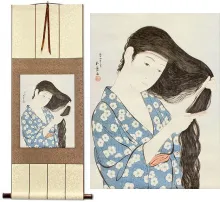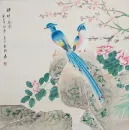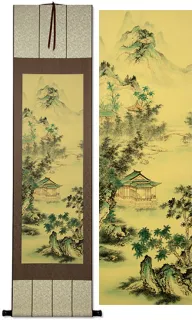Many custom options...
And formats...

Blue Jay in Chinese / Japanese...
Sorry! There's currently no match for Blue Jay in the calligraphy database...
If you want a special phrase, word, title, or proverb, feel free to contact me, and I'll translate your custom calligraphy idea for you.
Below are some entries from our dictionary that may match your Blue Jay search...
| Characters If shown, 2nd row is Simp. Chinese |
Pronunciation Romanization |
Simple Dictionary Definition |
青懸巣 see styles |
aokakesu; aokakesu あおかけす; アオカケス |
(kana only) blue jay (Cyanocitta cristata) |
アオカケス see styles |
aokakesu アオカケス |
(kana only) blue jay (Cyanocitta cristata) |
This in-stock artwork might be what you are looking for, and ships right away...
Gallery Price: $108.00
Your Price: $59.88
Gallery Price: $72.00
Your Price: $39.88
Gallery Price: $72.00
Your Price: $39.88
Beautiful Blue and Gold Chinese Birds & Flowers Painting
Discounted Blemished
Gallery Price: $71.00
Your Price: $39.00
Gallery Price: $268.00
Your Price: $148.88
Gallery Price: $101.00
Your Price: $55.88
Gallery Price: $50.00
Your Price: $29.88
Gallery Price: $63.00
Your Price: $34.88
Gallery Price: $63.00
Your Price: $34.88
Gallery Price: $72.00
Your Price: $39.88
Gallery Price: $83.00
Your Price: $45.88
Gallery Price: $60.00
Your Price: $36.88
Gallery Price: $72.00
Your Price: $39.88
Gallery Price: $63.00
Your Price: $34.88
Successful Chinese Character and Japanese Kanji calligraphy searches within the last few hours...


















